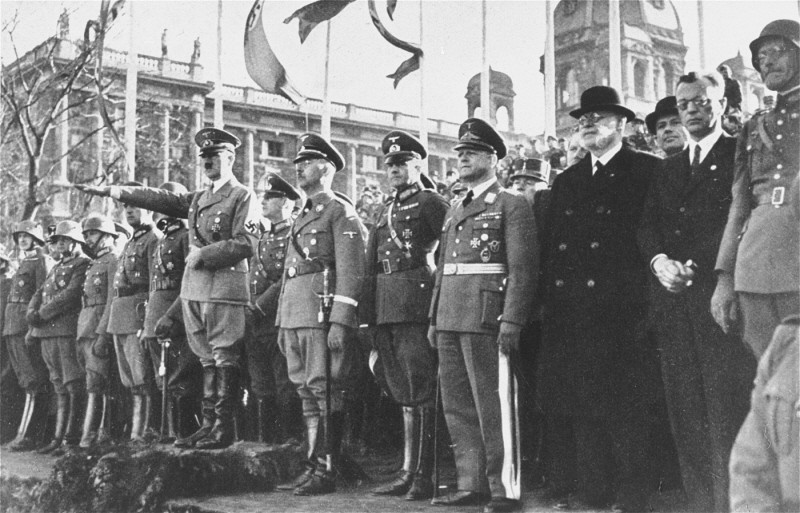World War II, a global conflict that reshaped the 20th century, is a subject of immense historical significance. A common question for those studying this period is: how long did WWII last? While the simple answer is six years, understanding the nuances of its duration requires exploring the timeline of events that defined this era. This article will delve into the chronology of World War II, providing a comprehensive overview of its key phases and answering the crucial question of its length, while also exploring the key events that marked this period.
The seeds of World War II were sown long before 1939, with events in the 1930s gradually escalating tensions across the globe. To truly understand how long did WWII last, we must consider these precursor events that laid the groundwork for the global conflict.
The Precursors to World War II: Setting the Stage for Global Conflict
While September 1, 1939, is widely recognized as the start date of World War II, aggressive actions by Axis powers in the preceding years demonstrated a clear trajectory towards global conflict. These early events are crucial to understanding the overall context and timeline of the war.
Early Aggressions: Manchuria, Ethiopia, and the Formation of the Axis
Japan’s invasion of Manchuria in September 1931 marked one of the earliest significant acts of aggression by a future Axis power. This invasion demonstrated Japan’s expansionist ambitions in Asia and challenged the existing international order.
In October 1935, Fascist Italy, under Benito Mussolini, invaded and conquered Ethiopia. This brutal campaign, lasting until May 1936, further highlighted the growing disregard for international law and the League of Nations’ inability to prevent aggression.
The burgeoning alliance between Nazi Germany and Fascist Italy solidified in October and November 1936. They signed a cooperation treaty in October, and on November 1st, the Rome-Berlin Axis was announced, signaling a dangerous alignment of expansionist powers in Europe. This was further strengthened in November 1936 with the Anti-Comintern Pact between Nazi Germany and Imperial Japan, ostensibly directed against the Soviet Union and international communism, but also forging a link between aggressive regimes in Europe and Asia. Italy joined the Anti-Comintern Pact in November 1937, further cementing the Axis bloc.
Escalating Tensions: Austria, Czechoslovakia, and the Path to War
Germany’s annexation of Austria, known as the Anschluss, in March 1938 was a blatant violation of the Treaty of Versailles and a significant step towards war. This unchallenged act emboldened Hitler and demonstrated the weakness of the Allied powers’ appeasement policy.
Adolf Hitler and his entourage observing a military parade after the Anschluss of Austria in March 1938, highlighting German expansionism before WWII.
The Munich Agreement in September 1938, signed by Germany, Italy, Great Britain, and France, forced Czechoslovakia to cede the Sudetenland to Nazi Germany. This act of appeasement, intended to prevent war, instead fueled Hitler’s ambitions. By March 1939, Germany had violated the Munich Agreement, occupying the rest of the Czech lands and creating the Protectorate of Bohemia and Moravia. Simultaneously, under German pressure, Slovakia declared independence.
The Brink of War: Poland and the Invasion
Following the occupation of Czechoslovakia, France and Great Britain, realizing the failure of appeasement, guaranteed the integrity of Poland’s borders in March 1939. Italy further demonstrated Axis aggression by invading and annexing Albania in April 1939.
The signing of the Nazi-Soviet Pact in August 1939, a non-aggression agreement with a secret protocol dividing Eastern Europe, removed the final obstacle for Hitler to invade Poland.
World War II in Europe: From Blitzkrieg to Victory in Europe (1939-1945)
September 1, 1939, marks the commonly accepted start date of World War II with Germany’s invasion of Poland. This act of aggression triggered declarations of war by France and Great Britain on September 3, 1939, honoring their commitment to Poland. The Soviet Union also invaded Poland from the east on September 17, 1939, sealing Poland’s fate. Warsaw surrendered by late September, and Poland was divided between Germany and the Soviet Union.
Early European Campaigns: Blitzkrieg and the Fall of France
The initial phase of the war in Europe was marked by swift German victories. After the invasion of Poland, the “Phony War” period followed, but this was shattered in April 1940 when Germany invaded Denmark and Norway. Denmark fell on the same day, while Norway resisted until June.
In May 1940, Germany launched its Blitzkrieg (“lightning war”) against Western Europe, invading France and the neutral Low Countries. Luxembourg was occupied immediately, the Netherlands surrendered in May, and Belgium followed suit shortly after. France signed an armistice in June 1940, with Germany occupying the northern half and the Atlantic coast. A collaborationist Vichy regime was established in the south. Italy joined the war in June 1940, further pressuring France.
The Battle of Britain, an air war fought from July to October 1940, saw the German Luftwaffe fail to achieve air superiority over Britain, marking a crucial early defeat for Nazi Germany.
The Eastern Front: Invasion of the Soviet Union and the Turning Point at Stalingrad
In June 1941, Nazi Germany launched Operation Barbarossa, the massive invasion of the Soviet Union. Initially, German forces made rapid advances, capturing vast territories and laying siege to Leningrad. By late 1941, they reached the outskirts of Moscow, but a Soviet counteroffensive in December 1941 halted the German advance and pushed them back.
In June 1942, Germany launched a renewed offensive in the Soviet Union, aiming for Stalingrad and the Caucasus. By September 1942, German troops reached Stalingrad, initiating a brutal and protracted battle. The Soviet counteroffensive in November 1942 encircled the German Sixth Army at Stalingrad, leading to their surrender in February 1943. The Battle of Stalingrad is widely considered a major turning point in World War II, marking the beginning of the Soviet advance westward.
Panzer tanks of the Afrika Korps, commanded by Erwin Rommel, pictured during their advance in Libya (1941-1942), representing the Axis powers’ reach during WWII.
The Allied Advance and Victory in Europe
Following Stalingrad and the Allied victory in North Africa in May 1943, the tide of the war began to decisively turn against the Axis powers. The Allied invasion of Sicily in July 1943 led to Italy’s surrender in September 1943, although Germany subsequently occupied northern Italy.
The D-Day landings in Normandy on June 6, 1944, opened a crucial second front in Western Europe. Allied forces advanced rapidly, liberating Paris in August 1944 and reaching the German border by September. Simultaneously, the Soviet Union continued its westward offensive, pushing German forces back across the Eastern Front.
Germany launched a final major offensive in the West, the Battle of the Bulge, in December 1944, but this failed and by January 1945 German forces were in retreat. In January 1945, the Soviets launched a new offensive, advancing into Poland and Hungary. Soviet forces captured Berlin in April 1945, and Hitler committed suicide on April 30, 1945.
Germany signed an unconditional surrender on May 7, 1945, which took effect on May 8, 1945, marking Victory in Europe Day (V-E Day) and the end of World War II in Europe.
World War II in the Pacific: From Pearl Harbor to the Atomic Bombings (1941-1945)
While war raged in Europe, conflict was also escalating in Asia. Japan’s attack on Pearl Harbor on December 7, 1941, brought the United States into World War II. The US declared war on Japan on December 8, 1941, and Germany and Italy declared war on the US on December 11, 1941, truly globalizing the conflict.
Initial Japanese Advances and the Turning Point at Midway
Following Pearl Harbor, Japan achieved rapid military successes across the Pacific, occupying the Philippines, Indochina, Singapore, and Burma by early 1942. However, the Battle of Midway in June 1942 proved to be a turning point in the Pacific Theater. The US Navy decisively defeated the Japanese fleet, halting Japanese expansion and shifting the strategic initiative to the Allies.
Allied Counteroffensive and the Atomic Bombings
From August 1942, with the landings at Guadalcanal, Allied forces began a slow and costly island-hopping campaign to retake territory from Japan. By 1945, US forces were advancing towards the Japanese home islands, capturing Okinawa in May 1945.
To avoid a costly invasion of Japan, the United States made the decision to use atomic bombs. The US dropped an atomic bomb on Hiroshima on August 6, 1945, and another on Nagasaki on August 9, 1945. Following these devastating attacks and the Soviet Union’s declaration of war on Japan and invasion of Manchuria on August 8, 1945, Japan agreed to unconditional surrender on August 14, 1945.
Japan formally surrendered on September 2, 1945, officially ending World War II globally. This date is often considered the final date for how long did WWII last.
A map illustrating the defeat of Nazi Germany from 1942 to 1945, showing the Allied advances that pushed back German forces and led to the end of WWII in Europe.
Key Takeaways: How Long Did WWII Actually Last?
So, how long did WWII last? World War II lasted for six years, starting in 1939 and ending in 1945.
- Start Date: While precursor events occurred throughout the 1930s, World War II is generally considered to have begun on September 1, 1939, with the German invasion of Poland.
- End Date in Europe: The war in Europe ended with Germany’s unconditional surrender on May 8, 1945 (V-E Day).
- End Date in the Pacific and Globally: World War II concluded with Japan’s formal surrender on September 2, 1945 (V-J Day).
While how long did WWII last is a straightforward question, the timeline of events reveals a complex and multifaceted conflict that spanned the globe and involved numerous nations. Understanding this timeline is crucial to grasping the full scope and impact of this pivotal period in human history.
This timeline provides a clear answer to the question “how long did WWII last?” and offers a more detailed understanding of the major events that shaped this global conflict. For further in-depth study, resources from reputable institutions like the US Holocaust Memorial Museum offer extensive information and analysis.

